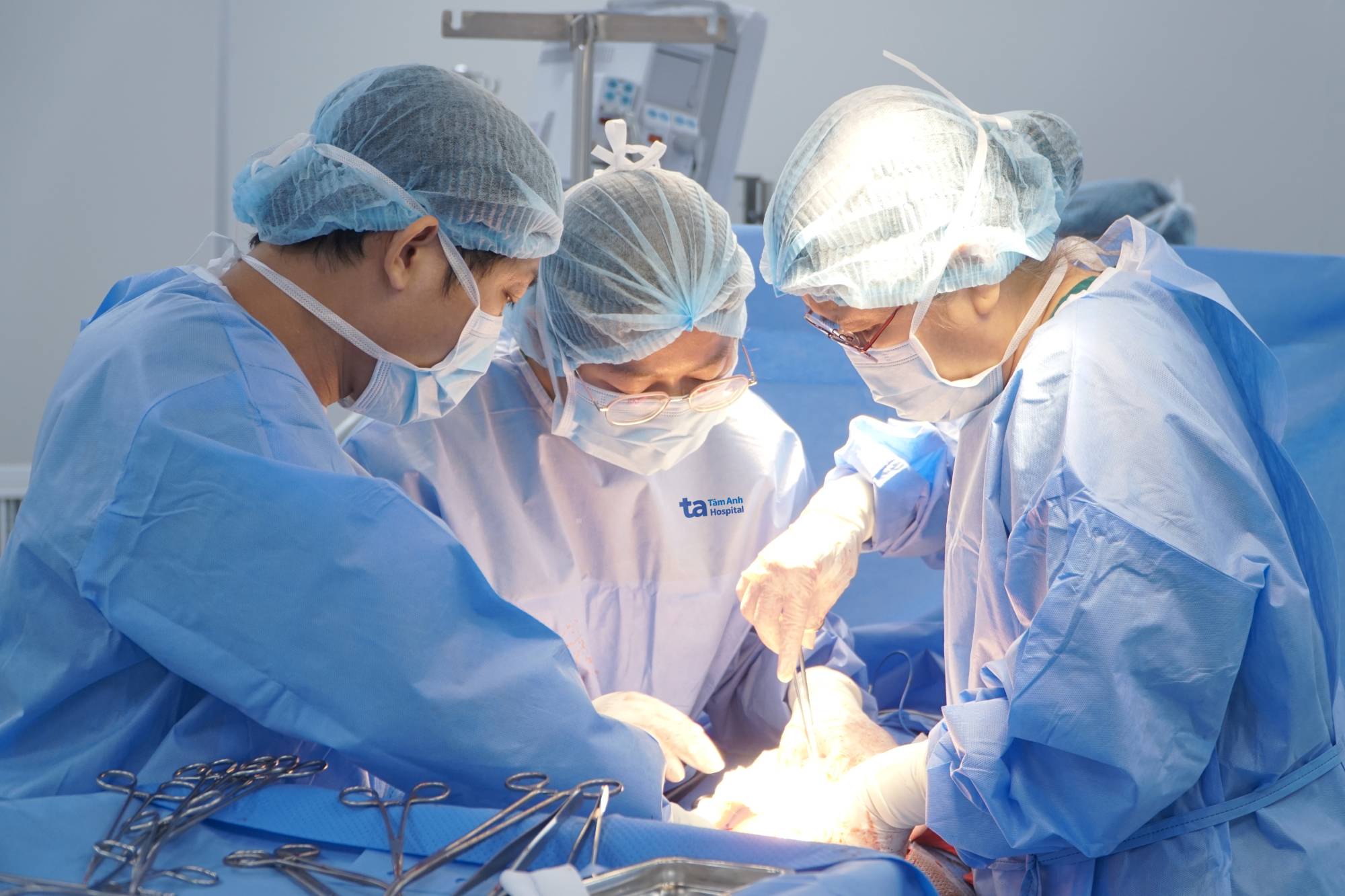Tham underwent surgery to remove uterine fibroids in the US 12 years ago but did not have regular check-ups. For the past two years, she experienced frequent painful and prolonged periods. A health check at Tam Anh General Hospital in Ho Chi Minh City revealed multiple uterine fibroids, the largest measuring 10x5 cm. Her blood ferritin level was 4.2 ng/mL, significantly lower than the normal range of 20-30 ng/mL.
Doctor Nguyen Thi Anh Thu from the Obstetrics and Gynecology Center explained that Tham's severe iron deficiency anemia was caused by the large fibroid distorting her uterus and resulting in heavy menstrual bleeding. Large fibroids can also compress surrounding organs, leading to various complications.
As Tham already has one child and does not plan to have more, the doctor recommended a total hysterectomy, preserving her ovaries to maintain hormonal function. She received a blood transfusion before the surgery. The pathology report confirmed the fibroid was benign. Two weeks after discharge, Tham's health was stable with no complications.
 |
The surgical team performing the hysterectomy. Photo: *Tam Anh General Hospital* |
Uterine fibroids (leiomyomas) are typically benign tumors of the uterine smooth muscle. They are the most common pelvic tumors in women, particularly those of reproductive age. These fibroids vary in size and shape and can be located inside the uterus, on its outer surface, or attached to it. Small fibroids often cause no symptoms and are only detected during routine check-ups through ultrasound or MRI scans.
Some fibroids remain stable or even shrink after menopause, while others grow rapidly and cause symptoms. Large fibroids can distort the uterus internally and externally, or fill the pelvic area, resembling pregnancy. Treatment options depend on the size, number, and location of the fibroids and may include medication, laparoscopic myomectomy (surgical removal of the fibroids while preserving the uterus), or open surgery.
Doctor Thu recommends maintaining a healthy weight, exercising regularly, following a balanced diet, and having regular check-ups to reduce the risk of developing fibroids. Women with uterine fibroids should have check-ups every 6-12 months. If you experience fatigue, paleness, unusual vaginal bleeding, prolonged or heavy periods, abdominal swelling, urinary incontinence, pelvic or lower back pain, seek medical attention promptly.
Ngoc Chau
*The patient's name has been changed.
| Readers can submit questions about obstetrics and gynecology here for doctors to answer. |












